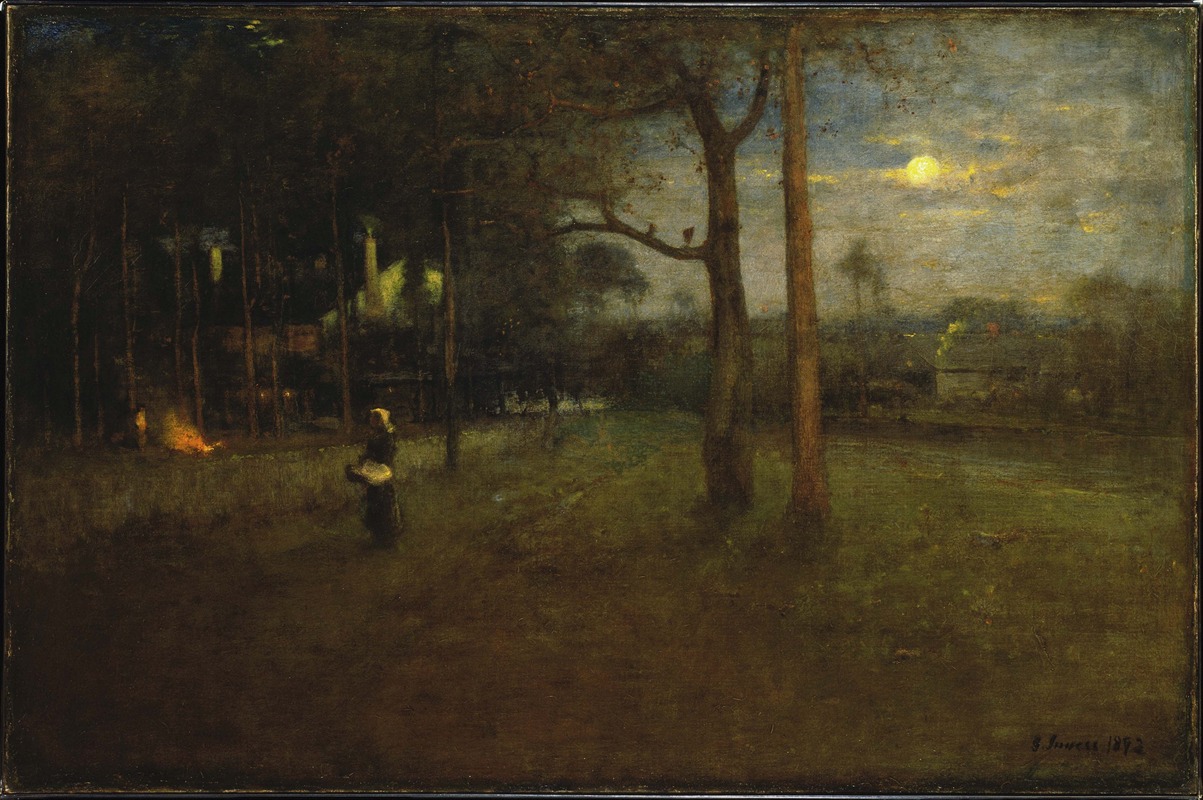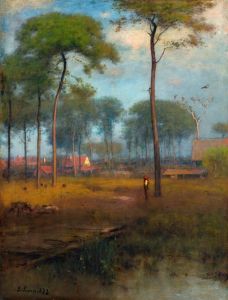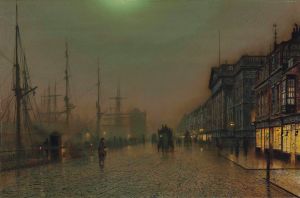
Moonlight, Tarpon Springs
A hand-painted replica of George Inness’s masterpiece Moonlight, Tarpon Springs, meticulously crafted by professional artists to capture the true essence of the original. Each piece is created with museum-quality canvas and rare mineral pigments, carefully painted by experienced artists with delicate brushstrokes and rich, layered colors to perfectly recreate the texture of the original artwork. Unlike machine-printed reproductions, this hand-painted version brings the painting to life, infused with the artist’s emotions and skill in every stroke. Whether for personal collection or home decoration, it instantly elevates the artistic atmosphere of any space.
"Moonlight, Tarpon Springs" is a painting by the American artist George Inness, completed in 1892. George Inness (1825–1894) is considered one of the most influential American landscape painters of the 19th century. Known for his evocative and atmospheric landscapes, Inness played a significant role in the development of American art, particularly through his association with the Tonalist movement, which emphasized mood and shadow over detailed representation.
"Moonlight, Tarpon Springs" is an exemplary work that showcases Inness's mature style, characterized by a soft, diffused light and a harmonious color palette. The painting depicts a serene landscape under the glow of moonlight, capturing the tranquil beauty of Tarpon Springs, Florida. This location was a popular winter retreat for Inness, who spent the later years of his life traveling between his home in Montclair, New Jersey, and Florida, seeking inspiration from the diverse American landscapes.
The composition of "Moonlight, Tarpon Springs" reflects Inness's interest in the spiritual and transcendental aspects of nature. The painting's subdued tones and gentle brushwork create a sense of calm and introspection, inviting viewers to experience the quietude of the scene. Inness was influenced by the philosophical ideas of Emanuel Swedenborg, a Swedish theologian whose writings emphasized the connection between the spiritual and natural worlds. This influence is evident in Inness's work, as he often sought to convey a sense of the divine through his landscapes.
Inness's technique in "Moonlight, Tarpon Springs" involves the use of layered glazes and a careful modulation of light and shadow, which contribute to the painting's ethereal quality. The moonlight softly illuminates the landscape, casting reflections on the water and creating a luminous atmosphere. This approach aligns with the Tonalist movement, which favored subtle gradations of tone and a focus on mood rather than precise detail.
The painting is part of the collection at the Museum of Fine Arts in St. Petersburg, Florida. It is considered a significant work within Inness's oeuvre, illustrating his mastery of capturing the interplay between light and landscape. "Moonlight, Tarpon Springs" not only exemplifies Inness's technical skill but also his ability to evoke emotion and contemplation through his art.
George Inness's contribution to American art extends beyond his paintings; he influenced subsequent generations of artists who admired his ability to blend realism with a profound sense of spirituality. His works continue to be celebrated for their ability to transcend the physical depiction of nature and touch upon the metaphysical, offering viewers a glimpse into the serene and mystical aspects of the natural world.


















